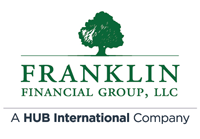 Healthcare costs, and consequently employee health benefit costs, have been growing at an alarming rate in recent years. The U.S. as a nation spends more on health care than any other developed country but has worse health outcomes. How is this possible?
Healthcare costs, and consequently employee health benefit costs, have been growing at an alarming rate in recent years. The U.S. as a nation spends more on health care than any other developed country but has worse health outcomes. How is this possible?
Four Key Factors Driving U.S. Healthcare Costs:
- Aging Population
Healthcare gets more expensive when the population expands, as people get older and live longer. The Baby Boomers, one of America’s largest adult generations, is approaching retirement age. Because of this, the 65+ population is growing at an unprecedented rate. According to the U.S. Census Bureau, 21% of the entire population will be age 65 or older by 2030. Older Americans will make up almost one-quarter of the population by 2060.
This growth is likely to contribute to rising healthcare costs in two important ways:
- Growth in Medicare enrollment
- More complex, chronic conditions
- U.S. Population Is Growing More Unhealthy
According to the Center for Disease Control and Prevention (CDC), 6 out of every 10 adults in the U.S. have at least one chronic disease, such as asthma, heart disease, high blood pressure, or diabetes, which all drive up health insurance costs. In 2020, the health care costs of people with at least one chronic condition were responsible for 86% of health care spending.
Additionally, recent data finds that nearly 20% of children and 40% of adults over 20 in the U.S. are either overweight or obese, which can lead to chronic diseases and inflated healthcare spending.
- Rising Drug Prices
On average, Americans shell out almost twice as much for pharmaceutical drugs as citizens of other industrialized countries pay. Moreover, prescription drug spending in the U.S. will grow by 6.1% each year through 2027, according to the Centers for Medicare and Medicaid Services (CMS) estimates.
Drug pricing strategies also contribute to rising healthcare costs. Drug manufacturers establish a list price based on their product’s estimated value, and manufacturers can raise this list price as they see fit. In the United States, there are few regulations to prevent manufacturers from inflating drug prices in this way.
- Administrative Costs
Simply put, multiple systems create waste. “Administrative” costs are frequently cited as a cause for excess medical spending. The U.S. spends about 8% of its health care dollar on administrative costs, compared to 1% to 3% in the 10 other countries the JAMA study looked at.
Why is administrative spending so high in the United States? The U.S. operates within a complex, multi-payor system, in which healthcare costs are financed by many different payors. With so many stakeholders involved, healthcare administration becomes a complicated, inefficient process.
These inefficiencies contribute to excess administrative spending. The main component of excess administrative spending is billing and insurance-related (BIR) costs. These are overhead costs related to medical billing, and include services like claims submission, claims reconciliation and payment processing.
Administrative costs, an aging population, rising prescription drug costs, and lifestyle choices all play a factor in ballooning healthcare expenses. While some of these factors are not in your control, others are. Find out where you can make a difference, not only in health insurance costs, but also to your overall health!
